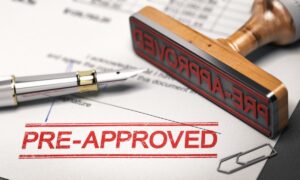Frequently Asked Questions
Refinancing your mortgage can be a smart move, especially when there's a significant difference in interest rates. If mortgage rates are approximately 2% lower than your current rate, it's generally a favorable time to consider refinancing. However, even if the interest rate difference is 1% or less, it may still be a viable option to explore. By refinancing, you have the potential to reduce your monthly mortgage payments. Let's say you have a $100,000 loan at an 8.5% interest rate, and your current payment (excluding taxes and insurance) is around $770. If you were able to lower the interest rate to 7.5%, your new payment would be $700. This means you would save $70 per month. Of course, the actual savings you can achieve through refinancing will depend on various factors, including your income, budget, loan amount, and any changes in interest rates. It's advisable to consult with a trusted lender who can assist you in calculating your specific options. Please note that the given example is for illustrative purposes only. For accurate and personalized advice regarding your mortgage refinancing options, it's best to consult with a mortgage professional or your chosen lender.
Points serve as a valuable tool during the mortgage process as they involve upfront fees paid to lenders to secure a lower interest rate. Within this context, two types of points exist: discount points and origination points. Discount points specifically target interest rate reduction, typically offering a 0.25% decrease per point. Conversely, origination points cover the lender's processing expenses and are not tied to the interest rate. When determining whether to pay points, it is vital to thoroughly assess the overall cost and potential long-term savings, particularly if you plan to retain ownership of the property for an extended period. Seeking advice from a mortgage professional allows you to receive customized guidance that aligns with your individual financial circumstances and homeownership goals.
Deciding whether to pay points to lower your interest rate is a personal decision based on various factors. It's important to consider the upfront cost of paying points and whether it aligns with your budget. The length of time you plan to stay in the home is crucial, as paying points can result in long-term savings if you stay beyond the "break-even point." You should also evaluate alternative options, such as accepting a slightly higher interest rate with lower upfront costs. Additionally, considering future interest rate changes is important. Seeking advice from a mortgage professional is recommended to receive personalized guidance based on your specific financial situation and homeownership goals.
APR, or Annual Percentage Rate, is a significant concept in mortgages. It represents the overall cost of borrowing, including the interest rate and additional fees associated with the loan. Unlike the interest rate, which focuses solely on the principal amount, the APR provides a more comprehensive picture of the loan's total expense. It incorporates factors like origination fees, points, mortgage insurance, and other costs tied to obtaining the mortgage. Expressed as a percentage, the APR helps borrowers compare different mortgage offers and make informed decisions by understanding the true cost of the loan. However, it's essential to note that the APR may not encompass all possible fees, such as appraisal or title insurance. Reviewing the loan estimate and other lender-provided documents is recommended to grasp the complete cost associated with the mortgage.
When you "lock" the interest rate for a mortgage, it means you secure a specific rate for a set period. This rate remains unchanged regardless of market fluctuations. The purpose of locking the rate is to protect borrowers from potential rate increases while their loan is being processed. Mortgage rates can change frequently, so locking in a rate provides stability and helps with financial planning. Lenders usually offer rate lock periods ranging from 30 to 60 days or longer. It's important to carefully review the terms, including any fees or expiration dates, associated with the rate lock. Once the rate is locked, even if market rates rise or fall, your rate remains the same, providing peace of mind during the loan processing and closing period. However, rate locks have time limits, and if the loan process exceeds the lock period, you may need to renegotiate or face a different interest rate. It's advisable to consult with your lender or mortgage professional to understand the specifics of rate locks and make informed decisions based on your circumstances and current market conditions.
When applying for a loan, whether with Zapa Mortgage or another lender, you'll typically need to gather several documents to support your application. While specific requirements may differ, common documents often requested include identification documents like a driver's license or passport, proof of income such as pay stubs or tax returns, employment verification, recent bank statements, documentation of assets like investments or real estate, copies of tax returns for the past two years, credit information and authorization for the lender to obtain your credit report, and property information if you've already chosen a property. Remember that it's always wise to consult directly with Zapa Mortgage or your loan officer for a comprehensive list tailored to your specific loan application.
Lenders consider various factors to assess the creditworthiness of mortgage loan applicants. These factors include the applicant's credit score, credit history, debt-to-income ratio (DTI), employment and income stability, financial reserves, and other financial obligations. A higher credit score and positive credit history improve the chances of loan approval. A lower DTI and stable employment/income provide confidence in the borrower's ability to repay the loan. Financial reserves act as a safety net, and other financial obligations help evaluate the borrower's overall financial health. Lenders use this assessment to form a judgment that influences loan approval decisions and determines the mortgage terms and conditions.
An appraisal in the context of a mortgage is the process of determining the value of a property. It involves a professional appraiser assessing various factors to estimate the property's fair market value. The lender typically requires an appraisal to ensure that the property's value is sufficient to support the loan amount. The appraiser conducts a physical inspection, considers the property's characteristics, and researches recent comparable sales in the area. The appraisal helps mitigate risk for the lender and assures the borrower they are paying a reasonable price. The appraiser provides a report detailing their findings and estimated value. The borrower usually covers the appraisal cost, and the appraiser is an independent third party. Overall, the appraisal is a crucial step in the mortgage process, ensuring the property's value aligns with the loan amount and providing an objective assessment of its worth.
Private Mortgage Insurance (PMI) is an insurance that safeguards lenders in case borrowers default on their mortgage payments. Typically, PMI is required when the borrower's down payment is less than 20% of the home's purchase price. Its purpose is to provide extra security to lenders, enabling them to offer mortgages with lower down payments and making homeownership more accessible. PMI adds an additional cost to the borrower's monthly mortgage payments, with the exact amount depending on factors such as the loan amount, down payment percentage, and borrower's creditworthiness. Usually calculated as a percentage of the loan amount, PMI can be paid monthly, included in the mortgage payment, or paid as a lump sum upfront. Importantly, PMI is not permanent. Once the borrower has built sufficient equity in the property, they can request the cancellation of PMI. Requirements for PMI cancellation vary by lender and loan program. Consulting with the lender or mortgage professional can provide specific guidance on managing PMI and exploring options for its potential elimination in the future.
80-10-10 financing is a mortgage strategy that allows borrowers to avoid paying private mortgage insurance (PMI) and obtain a lower down payment option. It involves taking out two loans simultaneously. The primary mortgage covers 80% of the home's purchase price and typically requires a minimum down payment of 10%. The second loan, known as a piggyback loan or second mortgage, covers 10% of the purchase price. This loan bridges the gap between the down payment and the desired 20% equity to avoid PMI. The second loan usually has a higher interest rate than the primary mortgage. The remaining 10% is covered by the borrower's down payment. Benefits of 80-10-10 financing include a reduced down payment requirement, potential tax advantages, and avoiding PMI, resulting in long-term cost savings. However, it's crucial to consider the interest rates, terms of both loans and the borrower's financial situation and goals. Consulting with a lender or mortgage professional is recommended to determine the suitability of 80-10-10 financing based on individual circumstances.
Closing, also known as settlement, is the final step in a mortgage transaction. During closing, the buyer and seller meet with their agents to review and sign legal documents such as the loan agreement, promissory note, and deed of trust. The buyer pays closing costs, which include fees for various services and prepaid expenses like property taxes. The closing agent verifies loan details and facilitates the transfer of funds, including paying off the seller's existing mortgage. Title transfer and recording occur to establish the buyer's ownership and the lender's lien on the property. Finally, the buyer receives the keys and officially takes possession of the home. Closing is a critical stage, and the buyer should carefully review all documents, seek clarification if needed, and understand their mortgage terms and responsibilities.
Other Blog Posts

How to Make an Offer on a Home
Buying your first home is an exciting milestone in your life. It represents not only a significant financial investment but also a place where you’ll

How to Find a Real Estate Agent
Welcome to the world of first-time home buying! Finding the perfect home is an exciting journey, but it can also be overwhelming, especially if you’re

How to Get Pre-approved for a Mortgage
Mortgage pre-approval is a preliminary assessment by a lender of your financial situation and creditworthiness to determine how much you may be eligible to borrow